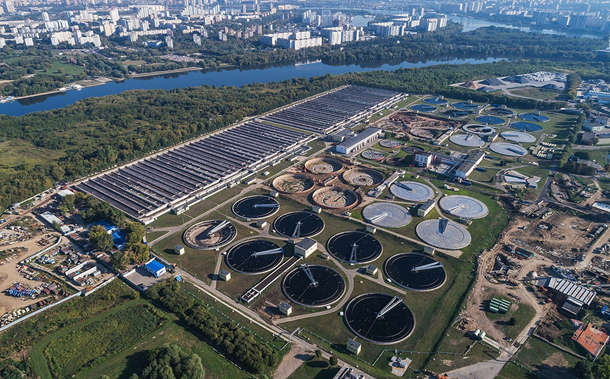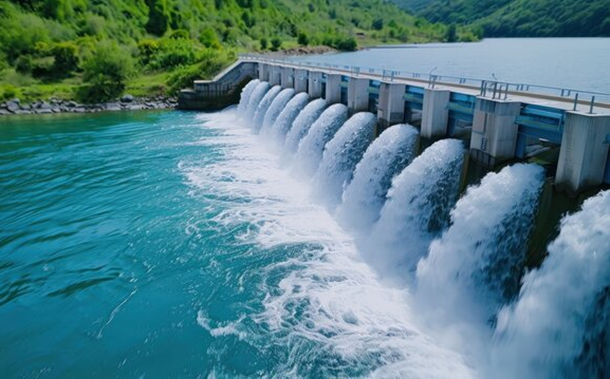Armor Layer Uniformity and Thickness in Stationary Conditions with Steady Uniform Flow
Downloads
Doi:10.28991/CEJ-2022-08-06-01
Full Text:PDF
Downloads
[2] Everard, M., & Powell, A. (2002). Rivers as living systems. Aquatic Conservation: Marine and Freshwater Ecosystems, 12(4), 329–337. doi:10.1002/aqc.533.
[3] Iberall, A.S. (1987). On Rivers. Self-Organizing Systems. Life Science Monographs. Springer, Boston, United States. doi:10.1007/978-1-4613-0883-6_3.
[4] Ettema, R. (1984). Sampling armor-layer sediments. Journal of Hydraulic Engineering, 110(7), 992-996. doi:10.1061/(ASCE)0733-9429(1984)110:7(992).
[5] Lamberti, A., & Paris, E. (1992). Analysis of armouring process through laboratory experiments. Dynamics of gravel-bed rivers, John Wiley & Sons, Chapter 11, 227-250.
[6] Shen, H. W., & Lu, J. Y. (1983). Development and prediction of bed armoring. Journal of Hydraulic Engineering, 109(4), 611-629. doi:10.1061/(ASCE)0733-9429(1983)109:4(611).
[7] Vázquez-Tarrío, D., Piégay, H., & Menéndez-Duarte, R. (2020). Textural signatures of sediment supply in gravel-bed rivers: Revisiting the armour ratio. Earth-Science Reviews, 207. doi:10.1016/j.earscirev.2020.103211.
[8] Abrahams, A. D., Li, G., Krishnan, C., & Atkinson, J. F. (2001). A sediment transport equation for interrill overland flow on rough surfaces. Earth Surface Processes and Landforms, 26(13), 1443–1459. doi:10.1002/esp.286.
[9] Yang, C. T., & Molinas, A. (1982). Sediment transport and unit stream power function. Journal of the Hydraulics Division, 108(6), 774-793. doi:10.1061/JYCEAJ.0005874.
[10] Zhang, S., Zhu, Z., Peng, J., He, L., & Chen, D. (2021). Laboratory study on the evolution of gravel-bed surfaces in bed armoring processes. Journal of Hydrology, 597. doi:10.1016/j.jhydrol.2020.125751.
[11] Bettess, R., & Frangipane, A. (2003). A one-layer model to predict the time development of static armour. Journal of Hydraulic Research, 41(2), 179–194. doi:10.1080/00221680309499960.
[12] Tait, S. J., Willetts, B. B., & Maizels, J. K. (1992). Laboratory observations of bed armouring and changes in bedload composition. Wiley, New York, United States.
[13] Proffitt, G. T. (1980). Selective transport and armouring of non-uniform alluvial sediments. PhD Thesis, University of Canterbury, Christchurch, New Zealand. Available online: https://ir.canterbury.ac.nz/handle/10092/102035 (accessed on February 2022).
[14] Parker, G., Klingeman, P. C., & McLean, D. G. (1982). Bedload and Size Distribution in Paved Gravel-Bed Streams. Journal of the Hydraulics Division, 108(4), 544–571. doi:10.1061/jyceaj.0005854.
[15] Wilcock, P. R., & Crowe, J. C. (2003). Surface-based transport model for mixed-size sediment. Journal of hydraulic engineering, 129(2), 120-128. doi:10.1061/(ASCE)0733-9429(2003)129:2(120).
[16] Curran, J. C., & Wilcock, P. R. (2005). Effect of Sand Supply on Transport Rates in a Gravel-Bed Channel. Journal of Hydraulic Engineering, 131(11), 961–967. doi:10.1061/(asce)0733-9429(2005)131:11(961).
[17] Wilcock, P. R., & DeTemple, B. T. (2005). Persistence of armor layers in gravel-bed streams. Geophysical Research Letters, 32(8), 1–4. doi:10.1029/2004GL021772.
[18] Bakke, P. D., Basdekas, P. O., Dawdy, D. R., & Klingeman, P. C. (1999). Calibrated Parker-Klingeman Model for Gravel Transport. Journal of Hydraulic Engineering, 125(6), 657–660. doi:10.1061/(asce)0733-9429(1999)125:6(657).
[19] Wilcock, P. R. (2001). Toward a practical method for estimating sediment-transport rates in gravel-bed rivers. Earth Surface Processes and Landforms, 26(13), 1395–1408. doi:10.1002/esp.301.
[20] Tan, L., & Curran, J. C. (2012). Comparison of Turbulent Flows over Clusters of Varying Density. Journal of Hydraulic Engineering, 138(12), 1031–1044. doi:10.1061/(asce)hy.1943-7900.0000635.
[21] Mrokowska, M. M., & Rowinski, P. M. (2019). Impact of unsteady flow events on bedload transport: A review of laboratory experiments. Water (Switzerland), 11(5). doi:10.3390/w11050907.
[22] Berni, C., Perret, E., & Camenen, B. (2018). Characteristic time of sediment transport decrease in static armour formation. Geomorphology, 317, 1–9. doi:10.1016/j.geomorph.2018.04.004.
[23] Elgueta-Astaburuaga, M. A., & Hassan, M. A. (2019). Sediment storage, partial transport, and the evolution of an experimental gravel bed under changing sediment supply regimes. Geomorphology, 330, 1–12. doi:10.1016/j.geomorph.2018.12.018.
[24] Ancey, C. (2020). Bedload transport: a walk between randomness and determinism. Part 2. Challenges and prospects. Journal of Hydraulic Research, 58(1), 18–33. doi:10.1080/00221686.2019.1702595.
[25] Limerinos, J. T. (1969). Determination of the Manning coefficient from measured bed roughness in natural channels. Water Resources Division, Geological Survey, US Department of the Interior, Washington, D.C., United States.
[26] Shields, A. (1936). Application of similarity principles and turbulence research to bed-load movement. Soil Conservation Service, Cooperative Laboratory, California Institute of Technology, Pasadena, United States.
[27] Gomez, B. (2022). The efficiency of the river machine. Geomorphology, 410, 108271. doi:10.1016/j.geomorph.2022.108271.
[28] Wang, Q., Pan, Y., Yang, K., & Nie, R. (2020). Structural properties of the static armor during formation and reestablishment in gravel-bed rivers. Water (Switzerland), 12(7). doi:10.3390/w12071845.
[29] Wang, Q., Li, L., Li, X., Wang, Y., & Nie, R. (2021). Calculation Model to Predict the Static Armor Layer Size Distribution After the Reconstruction of a Gravel River Bed. Frontiers in Earth Science, 9. doi:10.3389/feart.2021.660216.
[30] Anand, A., Beg, M., & Kumar, N. (2021). Experimental studies and analysis on mobilization of the cohesionless sediments through alluvial channel: a review. Civil Engineering Journal, 7(5), 915-936. doi:10.28991/cej-2021-03091700.
[31] van der Meer, J. W. (1986). Deterministic and Probabilistic Design of Breakwater Armour Layers. Dock and Harbour Authority, 67(785), 177–180. doi:10.1061/(asce)0733-950x(1988)114:1(66).
[32] Argente, G., Gómez-Martín, M. E., & Medina, J. R. (2018). Hydraulic stability of the armor layer of overtopped breakwaters. Journal of Marine Science and Engineering, 6(4), 143. doi:10.3390/jmse6040143.
[33] Escarameia, M. (1999). River and channel revetments - a design manual. Thomas Telford, London, United Kingdom. doi:10.1680/racradm.26919.
[34] Eaton, B., & Millar, R. (2017). Predicting gravel bed river response to environmental change: the strengths and limitations of a regime-based approach. Earth Surface Processes and Landforms, 42(6), 994–1008. doi:10.1002/esp.4058.
[35] Ackers, P., & White, W. R. (1973). Sediment Transport: New Approach and Analysis. Journal of the Hydraulics Division, 99(11), 2041–2060. doi:10.1061/jyceaj.0003791.
[36] PŠ‚aczkowska, E., Krzemień, K., Gorczyca, E., Bojarczuk, A., & Š»elazny, M. (2020). Disturbances in coarse bedload transport in a high-mountain stream channel system (Western Tatras, Poland). Geomorphology, 371, 107428. doi:10.1016/j.geomorph.2020.107428.
- Authors retain all copyrights. It is noticeable that authors will not be forced to sign any copyright transfer agreements.
- This work (including HTML and PDF Files) is licensed under a Creative Commons Attribution 4.0 International License.![]()














